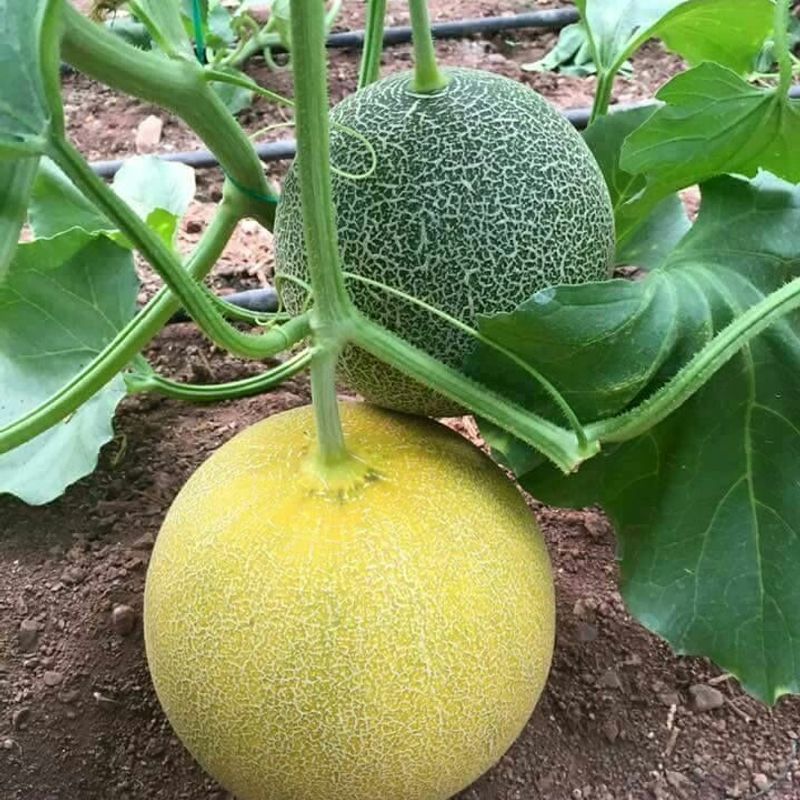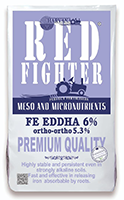Melon Growing Guide

Melons can be grown on a wide range of soil types although lighter soils are preferred. The highest yields will generally be produced on well drained, deep, clay-loam soils. Soils with high clay contents where drainage is hampered and where soil oxygen is likely to be low after rain or irrigation should be avoided. Melons should be well supplied with organic matter and are intolerant of wide variations in soil pH, which should be around 7.0 (H2O). The crop is also sensitive to low availability of Mg and the micronutrients Fe, Mo and B.
CULTIVATION PRACTICES
- SOIL PREPARATION
Soil must be thoroughly and deeply cultivated to obtain a good root system. This allows optimal use of moisture and helps to prevent soil borne diseases. The roots develop at a depth of 30-40cm and the soil structure at that level must be optimal. Soils must be free draining to below 1.2 m. It is advisable that plants are grown on raised beds of at least 10cm high. Beds should be 1.8m apart (from bed centre to bed centre) and as wide as possible on top. Paths should be at least 60 cm wide.
- PLANTING PERIODS
Melons are mostly planted in the spring and through the summer months, with limited planting during the winter in the warmer Northern part of South Africa.
- PLANT POPULATION AND SPACING
A general spacing of between 8,000 to 16,000 plants per hectare is recommended.
- SEEDLING PRODUCTION
Seedlings are used to produce early plants where outdoor soil temperatures are too cool for germination. Use peat block or module seedlings from a reputable nursery.
- TRANSPLANTING SEEDLINGS
Seedlings must be transplanted and watered as soon as possible after they have been obtained from the nursery. Planting trays should be kept cool and moist in the shade until used. When transplanting, roots should not be damaged by application of unnecessary pressure around the root module. Soil should be watered into contact with the roots rather than pressed in.
- BEES AND POLLINATION
Melon plants have separate male and female flowers on the same plant and bees are needed for pollination. When flowers appear, one bee hive should be placed per 4 ha.
- HARVESTING
Generally harvesting occurs 11-17 weeks after planting. One field can be harvested several times, 2-3 days apart. Melons should be harvested in the early morning, as hot fruit respire much more rapidly and lead to over-ripe fruit on delivery. Cut the stem about 2-4 cm long; do not pull fruit from vines. The longer stems make it more difficult for rots to enter the melon. Regular sanitation of knives and pruning scissors is essential.
Harvested fruit should be kept under shade and transported to the pack house within the shortest possible time to prevent the fruit temperature from rising and minimise moisture loss. Cantaloupe melon is picked when physiologically mature and the flesh colour has reached a mid to deep orange. The flesh must be firm, not crunchy and not glassy. The membrane in the seed cavity should be moist and starting to detach from the ovary wall. The raised, well-rounded/corky appearance of the net on the fruit rind is also an indicator of maturity. The skin colour of the fruit rind changes from green to straw-yellow with Eastern Shipper Cantaloupes. With extended shelf life Cantaloupes and Charentais hybrids, the rind colour changes from medium green to lime green during ripening. Honeydew melon is picked when physiologically mature and ripe. The rind should be white or cream coloured, and not green. The flesh colour should be pale to mid green and slightly translucent. Textures vary from firm to slightly soft, but must never be crunchy. The membrane in the seed cavity should be moist and starting to detach from the ovary wall. Piel de Sapo melon is picked when physiologically mature and ripe. The rind should be mottled green/yellow with a bright yellow ground spot. The flesh colour should be white, and slightly pinkorange around the seed cavity, with the membrane in the seed cavity starting to detach from the ovary wall. The flesh should be firm to crisp, but never soft.





